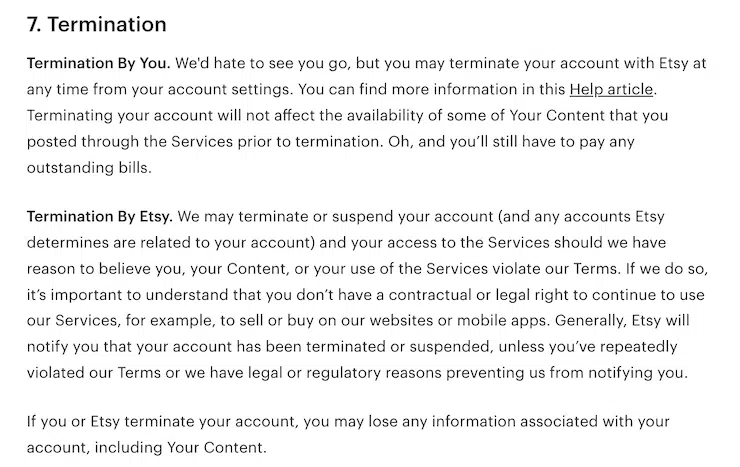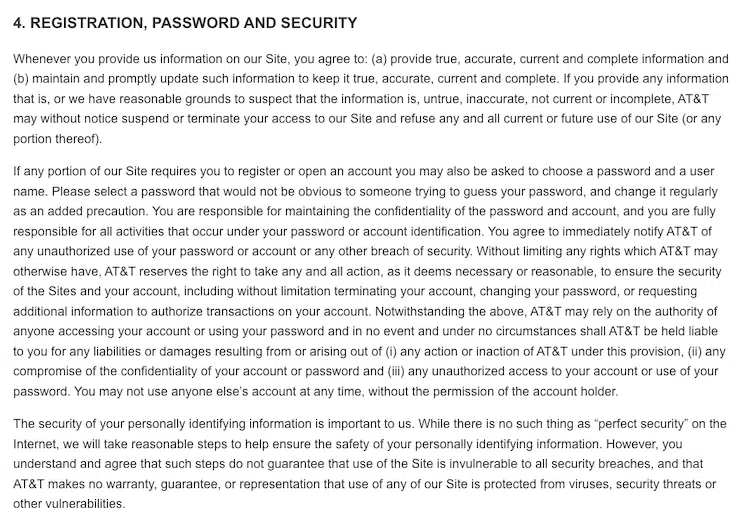Have you ever clicked “I agree” without really knowing what you’re agreeing to? Terms and Conditions might seem like a boring wall of text, but they hold the key to your rights and responsibilities.
Understanding these rules can protect you from unexpected surprises and help you make smarter choices online. Keep reading, and you’ll discover what those tricky clauses mean for you—and why paying attention could save you time, money, or even stress.

Credit: termly.io
Purpose Of Terms And Conditions
Terms and Conditions set the rules for using a website or service. They help both the business and users know what to expect. Clear rules reduce confusion and protect everyone involved. This section explains the main purposes of Terms and Conditions.
Setting Expectations
Terms and Conditions tell users what they can and cannot do. They explain the type of service or product provided. Users learn about payment, delivery, and cancellation policies. Clear expectations make the experience smoother for everyone.
Limiting Liability
These terms protect businesses from some legal risks. They clarify what the business is and is not responsible for. This helps prevent costly legal disputes. Users understand their rights and limits too.
Defining User Responsibilities
Users must follow certain rules to use the service properly. Terms and Conditions describe these duties clearly. This includes how to behave and handle information. It helps keep the service safe and fair for all users.
Key Elements To Include
Terms and conditions set the rules for using a service or product. Clear terms build trust and reduce conflicts. Including key elements helps protect both businesses and customers.
These elements explain rights, duties, and limits. They make expectations clear. Customers understand what they agree to.
Payment And Refund Policies
State how customers must pay for products or services. Specify accepted payment methods and due dates. Explain if and how refunds work. Include conditions for returns or cancellations. Clear payment rules avoid confusion and disputes.
Privacy And Data Protection
Describe how you collect and use personal data. Promise to keep data safe and private. Inform users about cookies and tracking tools. Let customers know their rights over their information. Strong privacy rules build customer confidence.
Intellectual Property Rights
Clarify who owns the content and products. Protect logos, text, images, and trademarks. Warn against copying or misuse. Explain rights to use the materials. This protects your brand and creative work.
Dispute Resolution Methods
Explain how conflicts will be solved. Offer options like negotiation, mediation, or arbitration. State the location and laws that apply. Clear dispute rules save time and money. They help solve problems peacefully.
Legal Requirements
Terms and Conditions must follow legal rules. These rules protect both businesses and customers. Meeting legal requirements helps avoid fines and legal trouble. It also builds trust with users. Below are key legal areas to consider.
Compliance With Local Laws
Each country has different laws for online businesses. Terms and Conditions must match these laws. This includes privacy, data use, and contract rules. Ignoring local laws can cause penalties. Checking laws regularly keeps your terms up to date.
Consumer Protection Regulations
Consumer laws protect buyers from unfair practices. Terms should clearly state refund and return policies. They must explain product or service limitations. Transparency helps avoid disputes and complaints. Following these rules shows respect for customers.
Accessibility Standards
Accessibility means making terms easy for everyone to use. This includes people with disabilities. Use simple language and readable fonts. Provide options for screen readers and other tools. Accessible terms show care and professionalism.
Drafting Tips
Drafting your Terms and Conditions is a critical step for any business. It sets the rules for how users interact with your site or service. Clear and effective Terms help protect your company and build trust with customers. Follow these simple tips to create solid Terms and Conditions that suit your needs.
Clear And Simple Language
Use plain words everyone understands. Avoid legal jargon or complicated phrases. Short sentences make your Terms easier to read. Think about your readers’ language skills. Simple language reduces confusion and prevents misunderstandings.
Customization For Your Business
Tailor your Terms to fit your specific business. Include rules that match your services or products. Every business is different, so one-size-fits-all won’t work. Customize sections like payment, refunds, and user responsibilities. This makes your Terms more relevant and protective.
Regular Updates
Review your Terms regularly to keep them current. Laws and business practices change over time. Update your Terms when you add new features or change policies. Notify users about important changes clearly. Regular updates keep your Terms effective and trustworthy.
Enforcing Terms And Conditions
Enforcing terms and conditions is key to protecting your business and users. Clear enforcement helps prevent disputes and keeps interactions fair. It ensures everyone follows the agreed rules.
Effective enforcement starts with clear communication and proper documentation. It also needs a plan for handling rule breaks. Keeping good records supports enforcement and future decisions.
Obtaining User Consent
Getting user consent is the first step in enforcement. Users must agree to your terms before using your services. Use simple checkboxes or confirmation buttons for clear consent.
Make terms easy to find and read. This builds trust and reduces misunderstandings. Show the most important points upfront to help users understand quickly.
Handling Breaches
Address breaches quickly to maintain order. Identify the problem clearly and gather evidence. Contact the user to explain the issue and possible consequences.
Offer a chance to fix the breach if possible. If serious, suspend or end the user’s access. Stay consistent in your actions to avoid confusion.
Record Keeping
Keep detailed records of all user agreements and breaches. Store consent forms, communication logs, and enforcement actions safely. This helps resolve future disputes fast.
Regularly update records to reflect any changes in terms or user status. Good records support legal protection and improve trust with users.
Common Mistakes To Avoid
Writing Terms and Conditions can be tricky. Many business owners make mistakes that cause problems later. Avoiding these errors saves time and money. Clear and fair terms build trust with users.
Overly Complex Clauses
Long and hard sentences confuse readers. Complex words make users give up reading. Keep clauses short and simple. Use plain language that anyone can understand. Clear terms reduce misunderstandings and disputes.
Ignoring Jurisdiction Issues
Not stating the legal jurisdiction causes confusion. Jurisdiction decides where disputes get solved. Choose a location familiar to your business. Make jurisdiction clear in your terms. This step avoids costly legal battles abroad.
Neglecting User Communication
Failing to inform users about changes hurts trust. Always notify users before updating terms. Use emails or website notices to communicate clearly. Good communication keeps users informed and loyal. It shows respect and professionalism.
Tools And Resources
Creating clear Terms and Conditions is essential for any website or business. Using the right tools and resources simplifies this task. These resources help ensure your policies protect your interests and comply with laws.
Templates And Generators
Templates offer a ready-made structure for your Terms and Conditions. They save time and reduce errors. Generators create custom documents by asking simple questions. Both options make writing easier for beginners.
Legal Consultation
Legal experts review your Terms and Conditions for accuracy. They check for gaps and ensure legal compliance. Consulting a lawyer gives peace of mind and avoids future problems.
Online Compliance Tools
Compliance tools track changes in laws affecting your policies. They provide alerts and updates automatically. Using these tools keeps your Terms and Conditions current and valid.

Credit: termly.io

Credit: termly.io
Frequently Asked Questions
What Are Terms And Conditions In Simple Words?
Terms and Conditions are rules set by a website or service. They explain what users can and cannot do.
Why Should I Read Terms And Conditions Carefully?
Reading them helps you know your rights and responsibilities. It prevents surprises or misunderstandings later.
How Do Terms And Conditions Protect Users?
They set clear rules that protect your data, privacy, and usage rights.
Can Terms And Conditions Change After I Agree?
Yes, they can change. Usually, websites notify users about updates and ask for consent again.
What Happens If I Don’t Follow Terms And Conditions?
You might lose access to the service or face legal actions depending on the breach.
Conclusion
Terms and conditions protect both users and businesses. They explain rights, duties, and limits clearly. Reading them helps avoid future problems or confusion. Always review terms before agreeing to any service. Clear terms build trust and ensure fairness. Keep these points in mind for safer online interactions.
Understanding terms makes your experience smoother and safer. Simple, clear rules help everyone stay informed and protected.
